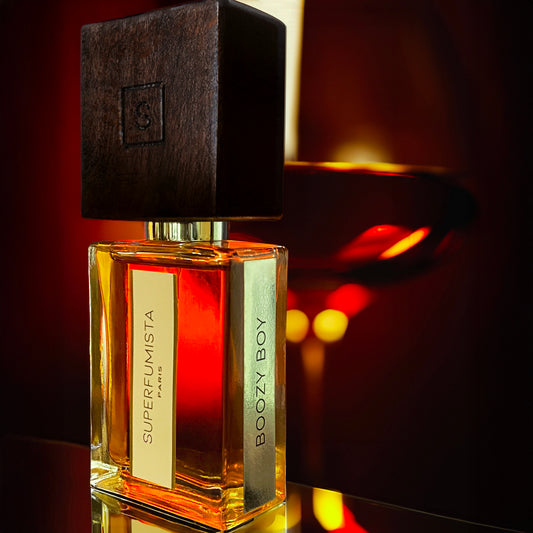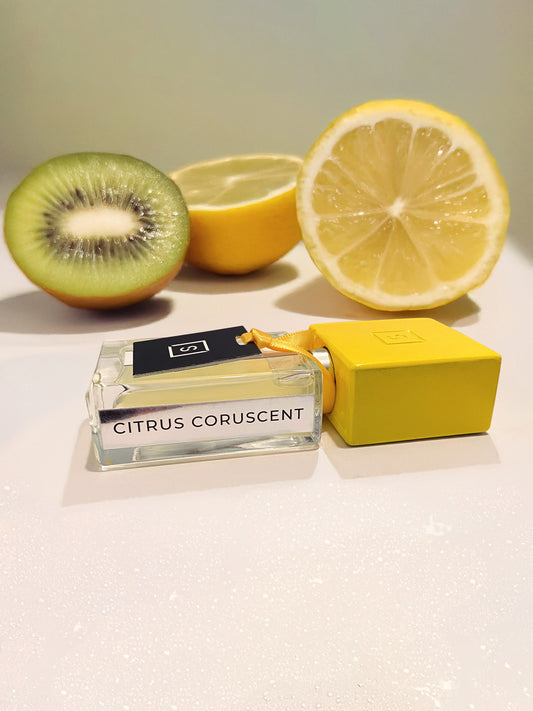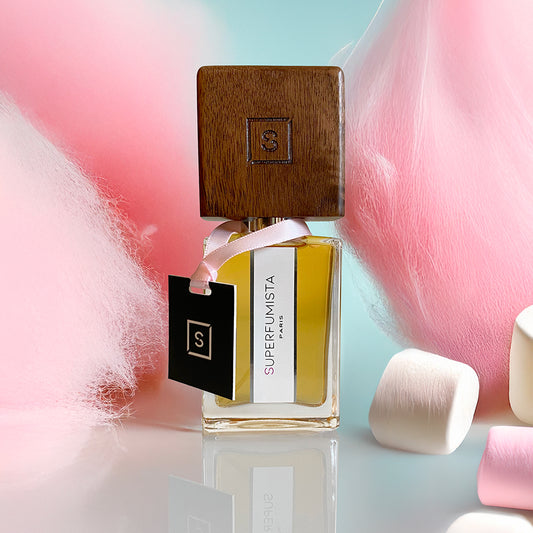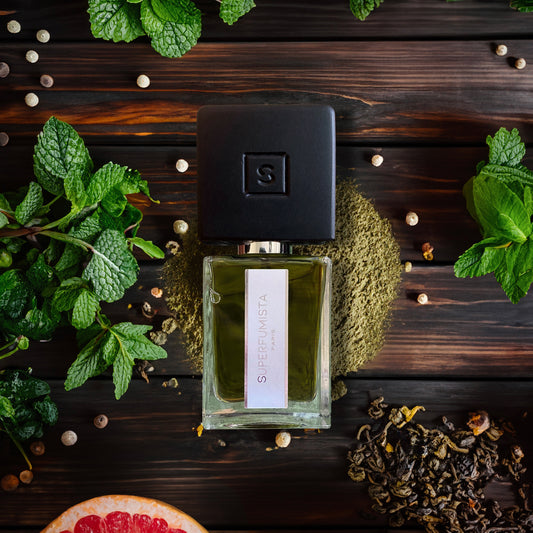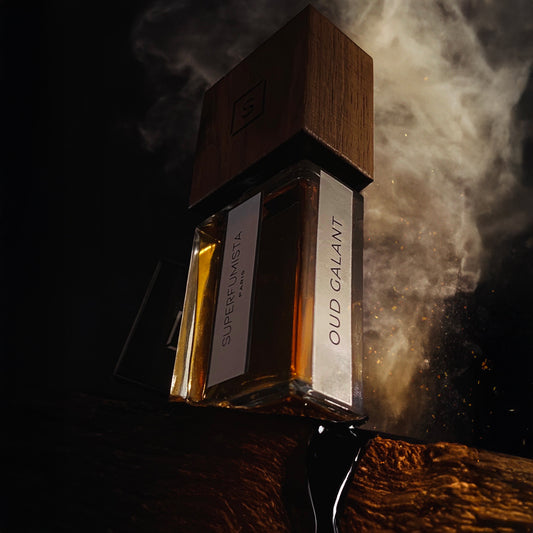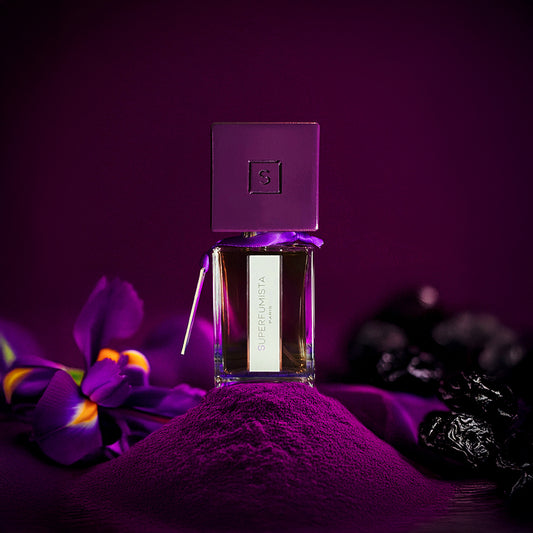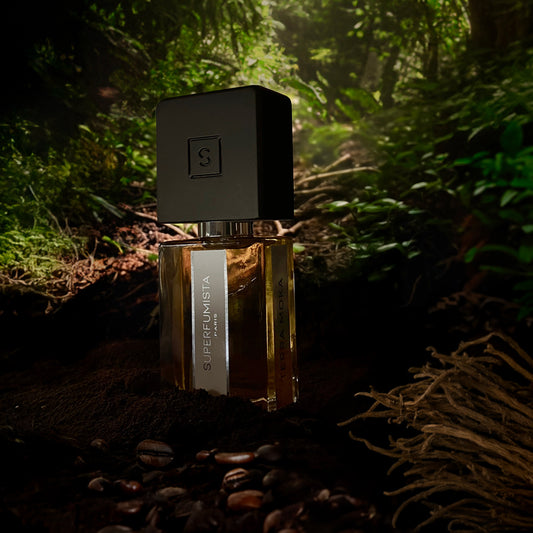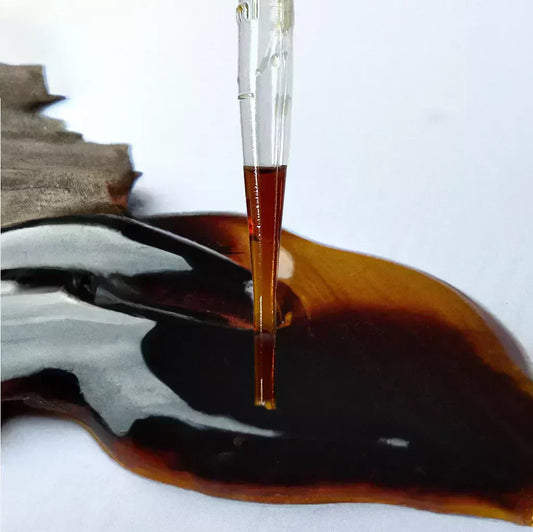
Pine
Share
Pine and its aromatic facets
You may have already breathed in that woody freshness that calls to mind a forest after the rain… behind this green breath lies pine absolute, a raw material at once vibrant and warm, capable of lending a fragrance resinous, balsamic and lightly smoky facets.
The charming names of pine
In perfumery, several pine varieties are particularly prized:
-
Siberian Pine BIO (Fir needle oil Siberia BIO): fresh and resinous notes, sourced from northern forests
-
Laricio Pine BIO: woody and balsamic character, harvested in Mediterranean regions
-
Scotch Pine BIO (Pinus sylvestris): green and spicy facets, native to Northern Europe
-
Giant Fir: soft, slightly sweet nuances, adds a high-altitude dimension
The Virginia cedar (Juniperus virginiana) is also mentioned; although it belongs to the Cupressaceae family, it shares woodsy tones similar to pine.
Olfactory profile and temperament
Top note: a green, tangy opening reminiscent of a spicy breeze through the needles
Heart note: resinous and balsamic, with a hint of spice and a subtle smoky nuance
Base note: warm accents of dry wood and soft leather that extend the forest trail
Evolution and materials
From classic 19th-century fougères to contemporary creations, the pine note unfolds from natural materials and synthetic compounds, each exploiting its specific aromatic facets.
Among natural extracts:
-
Pine absolute (concrete extracted with solvent from resinous material): resinous depth and long-lasting tenacity
-
Essential oil (steam distillation of needles): green transparency and olfactive clarity
-
Resinoids (solvent extraction of sap exudates): balsamic intensity
Among characteristic molecules and terpenes:
-
Alpha-pinene and beta-pinene: resinous freshness and medicinal nuances
-
Limonene: bright, tonic and lively citrus note
-
Camphene: dry wood and a slightly pungent nuance
-
Terpinolene: a gentle, spicy floral facet
-
Terpineol: floral roundness and a peppery touch
-
Terpinyl acetate and dihydroterpinyl acetate: fruity green and balsamic warmth
-
Dihydroterpineol: a linalool-like sweetness with a mentholated nuance
-
Borneol: a warm, slightly camphoraceous note
-
Sabinene: green, herbaceous and subtly spicy note
Each material finds its use: absolutes and resinoids structure and fix, essential oils open in the top notes, and synthetic molecules balance or amplify without weighing down the composition.
Perfumery applications
-
Revisited fougères: pairing with lavender, geranium and bergamot for an intense, resinous green accord
-
Winter accords: blending with cinnamon, tonka bean or vanilla for a warm, gourmand woodiness
-
Fresh waters and colognes: combining with citrus (lemon, grapefruit) and Mediterranean herbs (rosemary, basil) for a tonic, vegetal trail
-
Structured floral accords: using pine materials to support and enrich floral bouquets, especially to recreate the delicacy of lilac with the fresh green leaf note of the essential oil, the balsamic depth of the absolute and the sparkling floral note of terpenes
The perfumer often aims for two main evocative directions: the density of a pine forest with its fresh resinous imprint, or an aromatic Mediterranean approach where the herbaceous and zesty facets of pine interact with citrus and garrigue plants.
Pine, with its green, resinous breath, instantly evokes memories of forest walks or freshly aired homes. This familiar note, reminiscent of “that clean smell,” may seem simple, but working it in fine perfumery is a challenge: how to preserve its spontaneity while adding depth and character?


